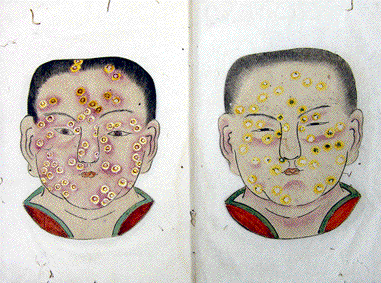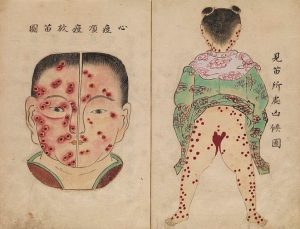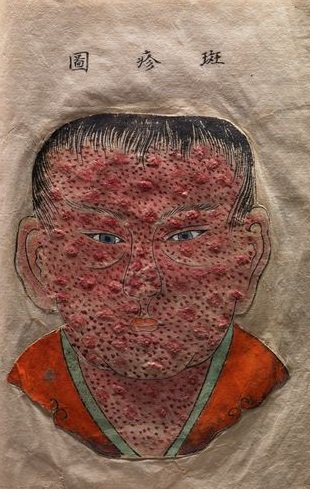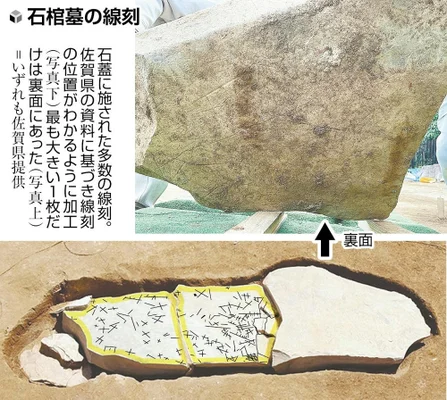この長野県考古学シリーズの第 3 章へようこそ、日本の考古学者の皆さん、古墳は秋葉原と呼ばれています。それから始めましょう。



この長野県考古学シリーズの第 3 章へようこそ、日本の考古学者の皆さん、古墳は秋葉原と呼ばれています。それから始めましょう。
-
写真のように線路沿いに再開されましたが、駅は上高地線の新島と呼ばれています。
-
直径 12 メートルで、8 世紀前半のものです。 誰が埋葬されましたか?
-
日本考古学の今後の刊行物が素晴らしい一週間でありますように。
-
Welcome Japanese archaeologists to chapter three of this Nagano Prefectural Archaeological series the burial mound is called Akihabara, with that said let's begin.
-
It was restarted along the train tracks as we can see in the picture, the station is called shinshima on the kamikochi line.
-
It is 12 meters in diameter and dates from the first half of the 8th century. Who was buried?
-
I hope you have a great week in future publications of Japanese Archaeology.
-
Bienvenidos arqueólogos japoneses al tercer capítulo de esta serie Arqueológica de la Prefectura de Nagano el túmulo funerario se llama Akihabara, dicho esto comencemos.
-
Se reinició a lo largo de las vías del tren como podemos ver en la imagen, la estación se llama shinshima en la línea kamikochi.
-
Tiene 12 metros de diámetro y data de la primera mitad del siglo VIII. ¿Quién fue enterrado?
-
Espero que tengan una gran semana en futuras publicaciones de Arqueología Japonesa.
More Posts from Noticiasarquelogicasjaponesas and Others



Sean bienvenidos a un nueva entrega un tanto especial, ya que tengo el gusto de presentaros Ishibutai, localizado en la prefectura de Nara data del periodo Asuka(592-710). - En un principio se barajaron hipótesis de que podría haber sido utilizado para espectáculos, en la década de los 30, Ishibutai es un kofun y os estaréis preguntando ¿no se supone que tenían ojo de cerradura? - Los podian a ver de muchos tipos se empiezan a construir en el año 300 al 592 d.c pero eso será otro capítulo de la arqueología y prehistoria japonesa. La tumba pudo pertenecer a Soga no Umako un político y ocupa una extensión de 54 m es la mayor estructura megalítica conocida en Japón. - ¿Hasta cuando estuvo utilizada? la edad de uso os dejará helados se construyó en el siglo VI y estuvo hasta el siglo VII para ser más exactos en este segundo dato en el 626 d.c. - En 1957 fue nombrado patrimonio nacional por la Unesco, ¿Cuánto pesa esta mole? un total de 30 rocas que le suman un peso aproximadamente de 2300 toneladas y las piedras del techo suman una friolera de 77 toneladas aproximadamente. - Espero que os haya gustado y nos vemos en una nueva publicación de arqueología y prehistoria arqueología japonesa. - Welcome to a new, somewhat special installment, as I have the pleasure of introducing you to Ishibutai, located in the Nara prefecture, dating from the Asuka period (592-710). - At first, hypotheses were considered that it could have been used for shows, in the 1930s, Ishibutai is a kofun and you may be wondering, aren't they supposed to have a keyhole? - You could see them of many types, they began to be built in the year 300 to 592 AD but that will be another chapter of Japanese archeology and prehistory. The tomb could have belonged to Soga no Umako, a politician, and occupies an area of 54 m, it is the largest megalithic structure known in Japan. - Until when was it used? The age of use will leave you frozen. It was built in the 6th century and was there until the 7th century to be more exact in this second data in 626 AD. - In 1957 it was named a national heritage site by UNESCO. How much does this mass weigh? a total of 30 rocks that add up to a weight of approximately 2,300 tons and the stones of the roof add up to a whopping 77 tons approximately. - I hope you liked it and see you in a new publication of archeology and prehistory Japanese archaeology. - 新しい、ちょっと特別な回へようこそ。今回は、飛鳥時代 (592 ~ 710 年) に遡る、奈良県にある石舞台についてご紹介したいと思います。 - 当初は、1930 年代にショーに使用されたのではないかという仮説が考えられていました。 石舞台は古墳ですが、鍵穴があるはずではないかと疑問に思うかもしれません。 - さまざまなタイプのそれらを見ることができ、それらは西暦 300 年から 592 年に建てられ始めましたが、それは日本の考古学と先史学の別の章となるでしょう。 この墓は政治家蘇我馬子の墓と考えられ、面積は54メートルあり、知られている巨石建造物としては日本最大である。 - いつ頃まで使われていましたか? この 2 番目のデータは西暦 626 年で、6 世紀に建てられ、より正確には 7 世紀まで存在していました。 - 1957 年にユネスコによって国家遺産に指定されましたが、この塊の重さはどれくらいでしょうか? 30 個の石を合計すると約 2,300 トン、屋根の石を合計すると約 77 トンにもなります。 - 気に入っていただければ幸いです。考古学と先史時代の日本の考古学の新しい出版物でお会いしましょう。


Sean bienvenidos, japonistasarqueológicos a una nueva entrega, de arqueología en la que comentaremos, cómo era vivir hace 2000 años en el período Yayoi, una vez dicho esto pónganse cómodos que empezamos. — En el emplazamiento, podréis vivir la experiencia de como si estuvierais en las viviendas, de dicho periodo, las recreaciones de los almacenes y los santuarios de las ruinas de toro se han reducido a una escala de aproximada al 80 % las paredes representan la naturaleza, de la época y de su estilo de vida. Siéntete como si hubieras viajado en el tiempo al pueblo Toro del período Yayoi, con nuestra máquina del tiempo, ya que puede ser una experiencia inolvidable, para todas las edades, porque la vida no ha cambiado en 2000 a 3000 años. — Espero que os guste y nos vemos en próximas publicaciones, que pasen una buena semana.
-
日本の考古学者諸君、ようこそ考古学の新連載へ。2000年前の弥生時代の暮らしとはどんなものだったのかについて語り合おう。 - 遺跡では、当時の住居がどのようなものであったかを体験することができます。トロ遺跡の倉庫や神社を約80%の縮尺で再現し、壁で当時の自然や生活様式を表現しています。まるでタイムマシンで弥生時代の登呂集落にタイムスリップしたかのような体験は、2000年から3000年経っても変わらない暮らしの中で、世代を問わず忘れられない思い出になることだろう。 - それでは、また次回もお楽しみに。
-
Welcome, Japanese archaeologists, to a new instalment of archaeology in which we will discuss what it was like to live 2000 years ago in the Yayoi period, so make yourselves comfortable and let's get started. - At the site, you can experience what it was like to live in the dwellings of that period, the recreations of the warehouses and shrines of the toro ruins have been reduced to a scale of about 80% and the walls represent the nature of the period and its lifestyle. Feel as if you have travelled back in time to the Toro village of the Yayoi period, with our time machine, as it can be an unforgettable experience, for all ages, because life has not changed in 2000 to 3000 years. - I hope you like it and see you in future publications, have a nice week.
詳しくは/more information:
https://www.shizuoka-toromuseum.jp/guide/admission/

Sean bienvenidos japonistasarqueológicos, a una nueva entrega de arqueología japonesa, una vez dicho esto pónganse cómodos que empezamos. - Antes que nada:¿Qué entendemos por una excavación arqueológica? Consiste en extraer los restos materiales de las culturas del pasado a esto se le llama cultura arqueológica por ejemplo: los restos viviendas de fosa y hoyos. Los restos arqueológicos, se localizan en la Ciudad de Narashino, en la prefectura de Chiba, los restos podrían tratarse del periodo jomon (15.000/16.000 a.c) - Espero que os haya gustado y nos vemos en próximas publicaciones, que pasen una buena semana. - 日本の考古学者たちよ、ようこそ。そう言われたら、くつろいで、さっそく始めましょう。 - まず、考古学的発掘とはどういうことかというと、過去の文化の物質的遺構を取り出すことであり、これを考古学的文化と呼びます。例えば、竪穴住居跡やピット跡などです。千葉県習志野市にあるこの遺跡は、縄文時代(紀元前15,000~16,000年)のものと思われます。 - 気に入っていただけたでしょうか、また今後の記事でお会いしましょう、良い一週間をお過ごしください。 - Welcome, Japanese archaeologists, to a new installment of Japanese archaeology, and once that's been said, make yourselves comfortable and let's get started. - First of all: What do we mean by an archaeological excavation? It consists of extracting the material remains of the cultures of the past, this is called archaeological culture, for example: the remains of pit dwellings and pits. The archaeological remains, located in Narashino City, Chiba Prefecture, may date back to the Jomon period (15,000/16,000 BC). - I hope you liked it and see you in future posts, have a nice week.





Sean bienvenidos a una nueva entrega de historia en esta ocasión, os comentaré una de las epidemias que azotó al país del Sol naciente una vez dicho esto póngase cómodos que empezamos. - La epidemia tuvo lugar en el periodo Nara (710-794) y la espidemia tubo lugar en 735-737.¿Conocían la epidemia? - Espero que os guste y nos vemos en próximas publicaciones, que pasen una buena semana. - Welcome to a new installment of history on this occasion, I will tell you about one of the epidemics that hit the country of the rising sun, having said that, make yourself comfortable and let's start. - The epidemic took place in the Nara period (710-794) and the epidemic took place in 735-737. Did they know about the epidemic? - I hope you like it and see you in future publications, have a good week. - この機会に、新たな歴史へようこそ。日出ずる国を襲った疫病の一つについてお話します。そうは言っても、気を楽にして始めましょう。 - 奈良時代(710年~794年)に流行し、735年~737年に流行しました。 彼らは疫病について知っていましたか? - 気に入っていただければ幸いです。今後の出版物でお会いできることを願っています。良い一週間をお過ごしください。





Sean bienvenidos japonistasarqueológicos, a una nueva entrega de arqueología nipona en esta ocasión os hablaré del castillo de Sunpu que se encuentra en la ciudad de Shizuoka, en la Prefectura de Shizuoka. - El castillo de Sunpu, fue en el lugar en donde vivó, Ieyasu Tokugawa en los siglos XVI-XVII, donde pasó sus últimos años de vida, las ruinas de las torres del castillo que se construyeron con diferentes métodos de construcción durante el período Sengoku y el período Edo. - Sunpu Castle Park es uno de los lugares turísticos representativos de la ciudad de Shizuoka es un parque que utiliza las ruinas del castillo, macizo de flores Aoi lleva el logo de la familia de Tokugawa como proyecto conmemorativo del 400 aniversario de Ieyasu Tokugawa. El área está bajo excavación, se encuentra en la zona noroeste y se está realizando actualmente la excavación de la torre del castillo. - Hay una parte del castillo que está muy reconstruida y que se puede visitar con un módico precio, dado que el segundo piso y los superiores no se pueden abrir al público debido a la ley de construcción, el piso se quita para que la estructura se pueda ver desde abajo. - La Puerta Este/Tatsumi Yagura, está rodeada por un foso y está cerca de la estación Shin-Shizuoka. La torreta Tatsumi Higashigomon y Tatsumi Yagura están conectadas,el Tatsumi Yagura fue restaurado en 1989 y la puerta este se restauró en 1996. La entrada al jardín Momijiyama está cerca de la puerta norte del parque del castillo de Sumpu. Hay un gran estanque en el centro, y está dividido en 9 áreas que se asemejan al paisaje de Shizuoka con flores de temporada. Hay una estatua de Yaji-san y Kita-san fue construida para conmemorar el 200 aniversario. - En 1585, Tokugawa Ieyasu comenzó la construcción del castillo y en 1588 se completó la torre del castillo Sunpu.Incluso después de que Ieyasu empezará el shogunato de Edo en 1603 y se mudó a Edo, la familia Tokugawa continuó preparándolo.Se dice que es el lugar donde Ieyasu regresó al castillo de Sumpu en 1607, se retiró y murió en 1616 a la edad de 75 años. - Espero que os haya gustado y nos vemos en próximas publicaciones, pasen una buena semana.
Welcome, Japanese archaeologists, to a new instalment of Japanese archaeology. This time I will be talking about Sunpu Castle, located in the city of Shizuoka, Shizuoka Prefecture. - Sunpu Castle was the place where Ieyasu Tokugawa lived in the 16th-17th centuries, where he spent the last years of his life. The ruins of the castle towers were built with different construction methods during the Sengoku and Edo periods. - Sunpu Castle Park is one of the representative tourist sites of Shizuoka City is a park that uses the ruins of the castle, Aoi flowerbed bears the logo of the Tokugawa family as a project commemorating the 400th anniversary of Ieyasu Tokugawa. The area is under excavation, it is located in the northwest area and the excavation of the castle tower is currently underway. - There is a part of the castle that is heavily reconstructed and can be visited for a small fee, as the first floor and above cannot be opened to the public due to construction law, the floor is removed so that the structure can be seen from below. - The East Gate/Tatsumi Yagura, is surrounded by a moat and is close to Shin-Shizuoka Station. The Tatsumi Higashigomon turret and Tatsumi Yagura are connected, the Tatsumi Yagura was restored in 1989 and the east gate was restored in 1996. The entrance to Momijiyama Garden is near the north gate of Sumpu Castle Park. There is a large pond in the centre, and it is divided into 9 areas that resemble the Shizuoka landscape with seasonal flowers. There is a statue of Yaji-san and Kita-san was built to commemorate the 200th anniversary. - In 1585, Tokugawa Ieyasu started the construction of the castle and in 1588 the Sunpu castle tower was completed. Even after Ieyasu started the Edo shogunate in 1603 and moved to Edo, the Tokugawa family continued to prepare it. It is said to be the place where Ieyasu returned to Sumpu castle in 1607, retired and died in 1616 at the age of 75. - I hope you liked it and see you in future posts, have a nice week.
日本の考古学者の皆さん、新しい日本考古学へようこそ。今回は、静岡県静岡市にある駿府城についてお話します。 - 駿府城は、16 世紀から 17 世紀にかけて徳川家康が晩年を過ごした場所です。天守閣跡は、戦国時代から江戸時代にかけてさまざまな工法で築かれました。
-
静岡市を代表する観光地の一つである駿府城公園は、徳川家康公400年記念事業として城跡を利用した公園で、葵花壇には徳川家のマークが刻まれています。発掘調査中のエリアで、北西部に位置し、現在天守閣の発掘調査が行われています。
-
城の一部は大規模に復元されており、1階以上は建築法の関係で一般公開できないため、床を撤去して下から構造を見学できるようになっており、低料金で見学できる。 。
-
新静岡駅からもほど近い、お堀に囲まれた東門・巽櫓。巽東御門櫓と巽櫓はつながっており、巽櫓は1989年、東門は1996年に復元されました。紅葉山庭園の入り口は駿府城公園の北門近くにあります。中央に大きな池があり、季節の花々が彩る静岡の風景をイメージした9つのエリアに分かれています。弥次さんと喜多さんの像があり、200年を記念して建てられました。
-
1585年に徳川家康が築城を開始し、1588年に駿府城天守閣が完成しました。 1603年に家康が江戸幕府を開き、江戸に移った後も、徳川家では仕込み続けられました。 1607年に家康が駿府城に戻り、隠居し、1616年に75歳で亡くなった場所といわれています。
-
気に入っていただければ幸いです。今後の投稿でお会いしましょう。良い一週間をお過ごしください。



Sean bienvenidos japoniatasarqueológicos a una nueva entrega, en esta ocasión os traigo otra noticia de arqueología de Japón la cual nos trasladaremos al periodo kofun o protohistórico (250 /592d.c) dicho esto Comencemos. - El túmulo funerario se encuentra rodeado de una doble fila de piedras, dicho túmulo se llama Koyasu y se localiza en Nakagawara Isenara, data de hace 1300 a 1400 años y pertenece al kofun tardío o protohistórico. Dicho conjunto arqueológico dispone de unos, 3600 kilómetros cuadrados aproximadamente, en la parte excavada dispone de 12 m y 14,8 de anchura se ha localizado debido a la construcción de la autopista Shin Tomei, que se localiza al margen derecho de Suzukawa al pie de la montaña Oyama se han encontrado tres dientes humanos. - Las piedras de dicho túmulo tienen distinta cantidad y tamaño, probablemente el túmulo central pertenecería a un jefe de un clan tribal y algún y el otro túmulo de menor tamaño pertenecería, pues, a alguien de la misma clase social, es decir que tuviera casi el mismo nivel social o un poco inferior al de la persona principal. - ¿De qué personaje histórico se trata? En próximas publicaciones hablaremos de este tema y aclararemos dudas sobre ellos dicho esto espero que les haya gustado y nos vamos en próximas publicaciones historia, arqueología de Japón hasta la próxima. - Welcome from Japan to a new installment, this time I bring you another archeology news from Japan which we will move to the kofun or protohistoric period (250 / 592 AD) with that said Let's start. - The burial mound is surrounded by a double row of stones, said mound is called Koyasu and is located in Nakagawara Isenara, dates from 1300 to 1400 years ago and belongs to the late or protohistoric kofun. This archaeological complex has approximately 3,600 square kilometers, in the excavated part it has 12 m and 14.8 in width, it has been located due to the construction of the Shin Tomei highway, which is located on the right bank of Suzukawa at the foot of the Oyama Mountain, three human teeth have been found. - the stones of said tumulus have different quantity and size, probably the central tumulus would belong to a chief of a tribal clan and some and the other smaller tumulus would belong, well, to someone of the same social class, that is to say, who had almost the same social level or a little lower than the main person. - What historical character is it? In future publications we will talk about this topic and clarify doubts about them, having said that, I hope you liked it and we will go in future publications history, archeology of Japan until next time.



Capítulo 1 Introducción: Sean bienvenidos japonistasarqueológicos a una nueva entrega síntesis en la que abordaremos la transición del período Jomon al período Yayoi ¿Posible fusión cultural? dicho esto pónganse cómodos que comenzamos. - El cultivo del arroz, entró a japón por desde Corea a través de la península de Kyushu,dicho periodo tuvo lugar en el siglo IV d.c y tardaría 800 años en extenderse por el resto de Japón, excepto Hokkaido( por la dureza del clima) - Según: “El Museo Nacional de Historia Japonesa realizó una medición 1 de carbón vegetal adherido a la cerámica Yayoi y descubrió que el arroz más antiguo data del año 1000 (en 2002) - Fusión de la cultura Jomon y la cultura Izumo: El mito de los dioses Izumo que nacieron durante este período, están representados por Okuninushi dios de la tierra y Sukunahiko para el desarrollo de la vida. - Espero que os haya gustado y nos vemos en próximas publicaciones de japón, que pasen una buena semana. - 第1章 はじめに 縄文時代から弥生時代への移行-文化的融合の可能性-」をテーマに、日本考古学者による新しい総集編をお届けします。 ということで、どうぞごゆっくりお過ごしください。 - 稲作は紀元4世紀に朝鮮半島から九州半島を経て日本に入り、800年かけて北海道を除く日本全国に広まった(気候が厳しかったため)。 - による。"国立歴史民俗博物館が弥生土器に付着した炭の測定1を行ったところ、最も古い米は1000年(2002年)に遡ることが判明した"。 - 縄文文化と出雲文化の融合:この時代に生まれた出雲の神々は、大地の神であるオオクニヌシと生命を育むスクナヒコに代表される神話であり、この神話に登場する神々は、縄文文化、出雲文化を融合させたものである。 - 次の日本語の記事でお会いしましょう。 - Chapter 1 Introduction: Welcome to Japanesearchaeology to a new summary delivery in which we will address the transition from the Jomon period to the Yayoi period. Possible cultural fusion? Having said that, make yourself comfortable and let's begin. - The cultivation of rice entered Japan from Korea through the Kyushu peninsula. This period took place in the 4th century AD and would take 800 years to spread to the rest of Japan, except Hokkaido (due to the harsh climate). - According to: “The National Museum of Japanese History conducted a measurement 1 of charcoal attached to Yayoi pottery and discovered that the oldest rice dates back to the year 1000 (in 2002) - Fusion of Jomon culture and Izumo culture: The myth of the Izumo gods who were born during this period, are represented by Okuninushi, god of the earth and Sukunahiko for the development of life. - I hope you liked it and see you in future posts from Japan, have a good week.





Sean bienvenidos, japonistasarqueológicos, a una nueva entrega de arqueología nipona, una vez dicho esto pónganse cómodos qué empezamos. - Nos volvemos a trasladar a la prehistoria japonesa que, cada día, nos sorprende con un nuevo hallazgo arqueológico. Las ruinas de Yoshinogari, datan del periodo Yayoi, pero en este caso del Yayoi tardio y se localizan en la prefectura de saga. - Se trata de una tumba de unos dos metros de largo¿Quién estaba enterrado en ella? Futuras investigaciones arrojarán luz. ¿Qué opinan ustedes sobre este hallazgo? - Os deseo una feliz semana y nos vemos en próximas publicaciones. 日本の考古学者たちよ、ようこそ!それでは、くつろいでいただき、始めましょう。 - 毎日、新しい考古学的発見で私たちを驚かせてくれる日本の先史時代へと話を戻します。吉野ヶ里遺跡は、佐賀県にある弥生時代後期の遺跡です。 - 古墳の長さは約2メートル。 誰が埋葬されていたのだろうか。この発見は、今後の研究によって明らかにされるでしょう。 あなたはどう思われますか? - それでは、今週もよろしくお願いします。また、今後の記事でお会いしましょう。 - Welcome, Japanese archaeologists, to a new instalment of Japanese archaeology, so make yourselves comfortable and let's get started. - We move back to Japanese prehistory, which surprises us every day with a new archaeological find. The ruins of Yoshinogari, dating back to the Yayoi period, but in this case to the late Yayoi period, are located in the prefecture of Saga. - The tomb is about two metres long. Who was buried in it? Further research will shed light on this discovery. What do you think about it? - I wish you a happy week and see you in future posts.






A marvel of prehistoric engineering, this sculptural group dates from around the 6th century AD and is a living archaeological relic of the emperor and Japanese glory. - 先史時代の技術の驚異であるこの彫刻群は、紀元6世紀ごろのもので、天皇と日本の栄光を伝える生きた考古学的遺物である。 - Todo una maravilla de la ingeniería prehistórica, este grupo escultórico data del siglo VI d.C aproximadamente, son todo una reliquia arqueológica viva el emperador y la gloria nipona.
-
 junian5522 liked this · 6 months ago
junian5522 liked this · 6 months ago -
 nessieac liked this · 9 months ago
nessieac liked this · 9 months ago -
 rorydbe liked this · 10 months ago
rorydbe liked this · 10 months ago -
 rfpreiwaphase liked this · 10 months ago
rfpreiwaphase liked this · 10 months ago -
 bipolarstringray liked this · 10 months ago
bipolarstringray liked this · 10 months ago -
 servant222 liked this · 10 months ago
servant222 liked this · 10 months ago -
 northameicanblog liked this · 10 months ago
northameicanblog liked this · 10 months ago -
 bulentinyuregi liked this · 10 months ago
bulentinyuregi liked this · 10 months ago -
 aloneinthedark-eagle liked this · 10 months ago
aloneinthedark-eagle liked this · 10 months ago -
 gunduzmetin liked this · 10 months ago
gunduzmetin liked this · 10 months ago -
 pix4japan liked this · 10 months ago
pix4japan liked this · 10 months ago -
 repera23 liked this · 10 months ago
repera23 liked this · 10 months ago -
 fulldefendordragon liked this · 10 months ago
fulldefendordragon liked this · 10 months ago -
 babylon-iraq-baghdad liked this · 10 months ago
babylon-iraq-baghdad liked this · 10 months ago -
 rbrooksdesign liked this · 10 months ago
rbrooksdesign liked this · 10 months ago -
 malioli liked this · 10 months ago
malioli liked this · 10 months ago -
 charlie-mac-posts liked this · 10 months ago
charlie-mac-posts liked this · 10 months ago -
 ravensvalley liked this · 10 months ago
ravensvalley liked this · 10 months ago -
 alirizaaksoy liked this · 10 months ago
alirizaaksoy liked this · 10 months ago -
 margocooper liked this · 10 months ago
margocooper liked this · 10 months ago -
 mariographique liked this · 10 months ago
mariographique liked this · 10 months ago -
 narihira8 liked this · 10 months ago
narihira8 liked this · 10 months ago -
 asiaphotostudio liked this · 10 months ago
asiaphotostudio liked this · 10 months ago -
 vestaignis liked this · 10 months ago
vestaignis liked this · 10 months ago -
 hidewaku liked this · 10 months ago
hidewaku liked this · 10 months ago -
 waiting-eyez liked this · 10 months ago
waiting-eyez liked this · 10 months ago -
 helluvatimes liked this · 10 months ago
helluvatimes liked this · 10 months ago -
 paddy0121 liked this · 10 months ago
paddy0121 liked this · 10 months ago -
 sicks93 liked this · 10 months ago
sicks93 liked this · 10 months ago -
 ted-blogs-blog liked this · 10 months ago
ted-blogs-blog liked this · 10 months ago -
 huseyinoktensblog liked this · 10 months ago
huseyinoktensblog liked this · 10 months ago -
 lina-vas-dom liked this · 10 months ago
lina-vas-dom liked this · 10 months ago -
 curiokhan0113 liked this · 10 months ago
curiokhan0113 liked this · 10 months ago -
 vivencias-del-alma liked this · 10 months ago
vivencias-del-alma liked this · 10 months ago -
 some-places liked this · 10 months ago
some-places liked this · 10 months ago -
 rodolfo9999 liked this · 10 months ago
rodolfo9999 liked this · 10 months ago -
 naser1963 liked this · 10 months ago
naser1963 liked this · 10 months ago -
 emaadsidiki liked this · 10 months ago
emaadsidiki liked this · 10 months ago -
 u-nobu liked this · 10 months ago
u-nobu liked this · 10 months ago -
 bear-pattern-hamster liked this · 10 months ago
bear-pattern-hamster liked this · 10 months ago -
 espacioteatraldanzite liked this · 10 months ago
espacioteatraldanzite liked this · 10 months ago -
 vuonkhuya liked this · 10 months ago
vuonkhuya liked this · 10 months ago -
 adam-trademark liked this · 10 months ago
adam-trademark liked this · 10 months ago -
 hiromusicarts-blog liked this · 10 months ago
hiromusicarts-blog liked this · 10 months ago -
 dgfmaurizio liked this · 10 months ago
dgfmaurizio liked this · 10 months ago

238 posts









